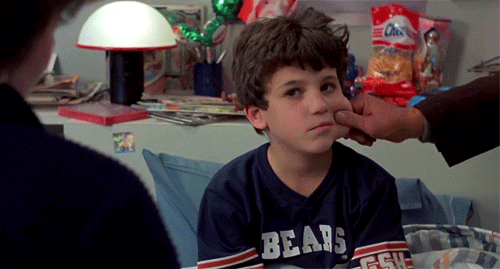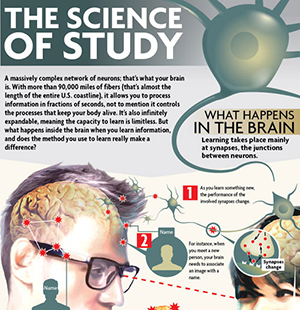Benjamin Mason Meier, Assistant Professor of Global Health Policy, is one of the creators of the Global Health and Human Rights Database. Benjamin and his colleagues wanted to collect information on different forms of legal tools used around the world to advance the human rights in health. Here is a link to his paper describing the project: “Bridging international law and rights-based litigation: Mapping health-related rights through the development of the Global Health and Human Rights Database.” I was interested in seeing his data on the map. So I used an open source project CartoDB to plot Benjamin’s data on the map. And here’s a quick visualization. Now I’m interested in comparing the resulting map with The World Bank eAtlas of Global Development maps. In particular, it would be interesting to compare GDP with focus on health-based human rights.
Ethnographic & User Data
Background Knowledge, Contributor, Ethnographic & User Data, Product Design Strategy, Reference, Scaffolding, Users
Guest Post: The Science of Study
by Olga Werby •
Conceptual Design, Ethnographic & User Data, Pipsqueak Articles, Product Design Strategy, Reference, Users
Cuteness Inspires Violence Research and Angry Birds
by Olga Werby •

Have you ever felt the urge to hug someone too hard? Squeeze a baby? Pinch a cheek? Even when you knew it might hurt the other person? If you have, you are not alone! Last month, Scientific American published an article Cuteness Inspires Aggression on the study done by Rebecca Dyer and Oriana Aragon of Yale University, documenting the intense response to cuteness. Cute aggression’s prevalence does not mean that people actually want to harm cuddly critters, Aragon explains. Rather the response could be protective, or it could be the brain’s way of tamping down or venting extreme feelings of giddiness and happiness. The scientists are currently conducting additional studies to determine what drives the need to squeeze. So this research led me to think of the success of the Angry Birds game. Originally, I thought that it was the juxtaposition of the cuteness factor and violence that made the game so irresistible as a sales effort (once people started playing it, the puzzles were good enough to sustain engagement with the game without the cute + aggressive factor). Would the game be just as fun to talk about (or to wear t-shirts) if the birds weren’t so damn cute?…
Conceptual Design, Cultural Differences, Ethnographic & User Data, Pipsqueak Articles, Product Design Strategy, Scaffolding, Users
Intended and Unintended Consequences of Social Design
by Olga Werby •

Nudging is a form of social engineering — a way of designing system constraints and support structures to encourage the majority of people to behave in accordance with your plan. Here’s a famous-in-my-classroom example of nudging: Opt-in versus Opt-out Consent Solutions There are many examples of such social engineering. During our breakout groups at the NIH think tank on the future of citizen participation in biomedical research, I raised the difference between opt-in versus opt-out option results for organ donation. In some countries in Europe, citizens have to opt-out from donating their organs in a case of a tragic accident — they have to do something to NOT donate their organs. As the result in Austria — which has an opt-out system — the donation rate is 99.98%! While in Germany — which has an opt-in system — only 12% will their organs for transplants. This is a huge difference in consent between very similar populations of people. Unintended Consequences of Social Design Not all social engineering efforts go as well as opt-in/opt-out organ donation systems. To reduce pollution for the 2008 Summer Olympic Games in Beijing, the Chinese government established the even/odd license plate law: cars with even license…
Background Knowledge, Cultural Differences, Ethnographic & User Data, Pipsqueak Articles, Product Design Strategy
Do you remember Gardol?
by Olga Werby •

Do you know what Gardol is? Unless you are close to retiring, probably not… So here’s a bit of background: Gardol is sodium lauroyl sarcosinate — not a very harmonious sounding chemical. I’m guessing Gardol was a clever marketing trick of combining the words “Guard” and “All”, relying on the phonetic combination to drive home the idea of protective quality of this chemical compound. In our society, chemicals don’t sell — we have an aversion to chemicals, we only want natural products! The common Western p-prim (or folksy wisdom) is that chemical are bad for us, and products created from natural ingredients are good for us … never mind arsenic! Gardol might have disappeared from the drug store ads, but the chemical sodium lauroyl sarcosinate didn’t — today it goes by the name “Advance White” and is part of a very well respected for its natural and health-consious products, Arm & Hammer toothpaste! Oh, and we don’t like the word “dental cream” — it’s toothpaste now…
Background Knowledge, Background Knowledge Errors, Cognitive Blindness, Conceptual Design, Cultural Differences, Ethnographic & User Data, Users
Culture, education, language, and thinking
by Olga Werby •
How we think about problems depends in part of how we are taught to do so. And that education is seeped in our culture and language. Metaphors, mnemonics, analogies, riddles, word choice for explanations are tightly interwoven into our language. Just like it was probably impossible for Romans to invent calculus given their numeral system, it is difficult to think clearly about some problems in some languages. I’ve learned advanced physics and mathematics in English and find it very difficult to express thoughts in those domains in Russian (my native language). But when I first came to New York, I marveled at how poor my cohorts’ geometry proofs were — their presentations took a lot of space and too many steps to achieve what I was taught to do in minimal configuration. I was taught to jump and bound from concept to concept (in geometry), while the students in America were taught to crawl through ideas. I found that maddening! But it was a different math language, and as such it allowed for a different set of affordances… It is difficult to easily show the differences in thought process that language makes in this short blog. But here’s a bit…
Background Knowledge, Cognitive Blindness, Cultural Bias, Cultural Differences, Ethnographic & User Data, Pipsqueak Articles
Cultural Differences or Child Abuse
by Olga Werby •

We view the world through our own personal and cultural filter. We can’t help but do that. But put us in another cultural frame or time period, and we might be horrified at what we might witness. Consider this image: This baby is only two months old. And the people about to dip him into the freezing waters of St. Petersburg’s lake are his parents. I’ve been to this lake. I saw my own dad do the dip. He was a grown man at the time, and I still thought it was crazy. In Russia, the folksy wisdom is that such dips are good for you. But here, in U.S., the parents would be arrested, their son taken away by child protective services… It’s all relative! And here’s a few examples: /blog/2011/01/cultural-differences-or-child-abuse/

